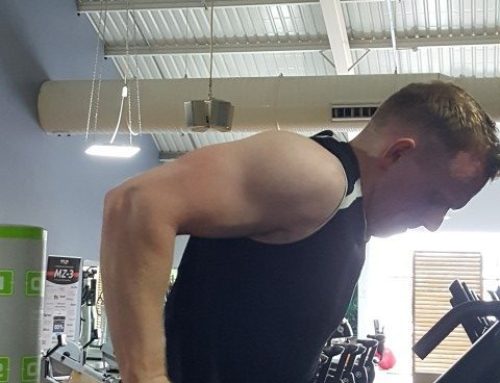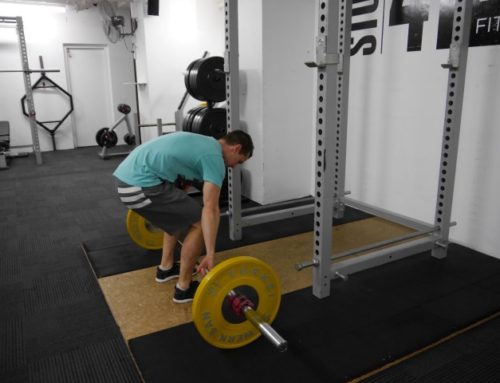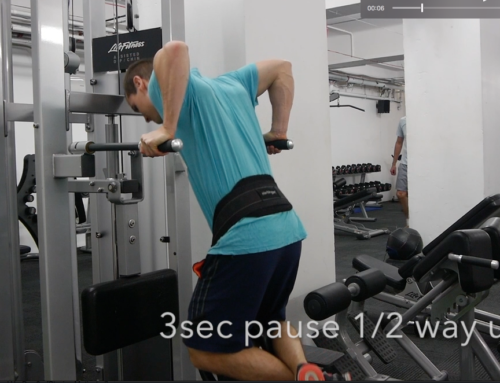As I move into my 2nd phase to improve strength in my Dips, I have decided that I am going to implement the wave load method.
If you aren’t aware already, Ben and I are having a competition to see who can improve the dip strength the most over the course of the 12 weeks and documenting all our training as we go along. Check out all the information you need here to learn exactly what it’s all about.
Wave load method has been around for a long time and has a proven track record of being great for increasing strength. I have used it in the past, but oddly enough, never seen the great improvements in strength that I was expecting. But I thought, hey, I’ll give it another crack and see if it works better for me this time. I’ve never tried it for dips, and I am thinking that this time it is going to be different. Well, here’s hoping anyway.
What is a Wave Load?
Wave load involves using ‘wave-like’ sets to heighten your nervous system and create an increase in motor unit recruitment in order to illicit greater strength production.
Here is an example of what wave load sets can look like
Set 1: 3 reps
Set 2: 2 reps
Set 3: 1 rep
Set 4: 3 reps
Set 5: 2 reps
Set 6: 1 rep
This would be an example of 2 waves.
Sets 1 – 3 are the first wave and sets 4 – 6 are the second wave.
During the 2nd wave your goal is to increase the weight lifted on each set compared to the 1st wave.
In order to do so, for the first wave you wouldn’t be targeting absolute max efforts, compared to the 2nd wave where you are trying to hit a new best, especially on the final 1 rep. (please note that you could do 3 waves)
Over the course of this training phase as your strength increases, your starting point will shift and you will be lifting heavier weights in the 1st wave to target new personal bests in the 2nd wave
Example: Personal best is 60kg
Wave Load Workout 1
Set 1: 3 reps @ 45kg
Set 2: 2 reps @ 50kg
Set 3: 1 rep @ 55kg
Set 4: 3 reps @ 50kg
Set 5: 2 reps @ 55kg
Set 6: 1 rep @ 60kg
Wave Load Workout 2
Set 1: 3 reps @ 50kg
Set 2: 2 reps @ 52.5kg
Set 3: 1 rep @ 57.5kg
Set 4: 3 reps @ 52.5kg
Set 5: 2 reps @ 60kg
Set 6: 1 rep @ 62.5kg
Wave Load Workout 3
Set 1: 3 reps @ 50kg
Set 2: 2 reps @ 55kg
Set 3: 1 rep @ 60kg
Set 4: 3 reps @ 55kg
Set 5: 2 reps @ 60kg
Set 6: 1 rep @ 65kg
There are many different options you can choose when setting up your wave sets and it’s also a good time to point out that you can use wave loading for muscle growth as well
Examples of a wave load for hypertrophy
Set 1: 10 reps
Set 2: 8 reps
Set 3: 6 reps
Set 4: 10 reps
Set 5: 8 reps
Set 6: 6 reps
Set 1: 8 reps
Set 2: 6 reps
Set 3: 4 reps
Set 4: 8 reps
Set 5: 6 reps
Set 6: 4 reps
Examples of a wave load for strength
Set 1: 7 reps
Set 2: 5 reps
Set 3: 3 reps
Set 4: 7 reps
Set 5: 5 reps
Set 6: 3 reps
Set 1: 6 reps
Set 2: 4 reps
Set 3: 2 reps
Set 4: 6 reps
Set 5: 4 reps
Set 6: 2 reps
Set 1: 3 reps
Set 2: 2 reps
Set 3: 1 rep
Set 4: 3 reps
Set 5: 2 reps
Set 6: 1 rep
How does using wave load training increase strength?
There are many different factors that come into play on why performing wave load sets is effective at increasing strength production
- It gives you an opportunity to be exposed to lifting heavy loads close to your 1-rep max. All to often we stay away from the very low reps, as there is a perception that it won’t have great carry-over to how we look, so we stick with the 6+ rep ranges, and if you haven’t been training for a long time then this is a good idea for you. However, if you want to increase your strength, you need to get down into the lower rep ranges, move some heavy weight and challenge yourself.
- The idea of using waves is so that the previous set ‘potentiates’ the following set, allowing a greater contraction to occur, i.e increase force production through heightened nervous system activity. The first wave is going to excite your nervous system, enabling a far greater recruitment of motor units to perform the same activity. It is this very reason that you don’t want to fully max out on the first wave and dampen the neural response but arouse the neural activity to increase strength. This phenomena is known as post-tetanic potentiation is also a great tactic to use when trying to increase power (however, used in a different method)
- By lifting heavy weights at low reps, you will primarily recruit your high threshold motor units. These motor units have the greatest capacity to increase force production, in turn the greatest ability for you to see an increase in strength production.
My full routine completed twice per week for 3 weeks
- Dips – wave load 3,2,1,3,2,1
Rest Interval 2-3mins
- Overhead Rack Lockouts 5 x 3 – 5 reps
Rest Interval 120s
- Overhead Rope Extension 4 x 6 – 8 with 2 sec pause @ stretch position
Rest Interval 90s
See video below for a demo of the workout





